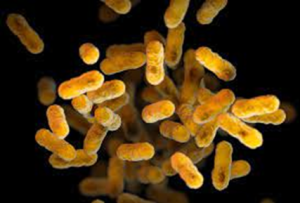Please click the frequently asked questions below for further information and IPC precautions required:
-
What is Whooping Cough?
Pertussis is an acute respiratory infection caused by the Gram-negative organism Bordetella pertussis. Pertussis can affect individuals of any age although the clinical presentation does vary. Young unvaccinated infants are at highest risk of severe complications (including pneumonia, apnoea and seizures) and death. Older vaccinated individuals often present with milder symptoms and atypical features which may go unrecognised leading to delays in treatment and timely public health action to prevent ongoing transmission.

-
Symptoms
The initial symptoms (catarrhal stage) include:
- runny nose
- fever
- cough
- apnoea (in babies)
Later symptoms (paroxysmal stage) include:
- paroxysms of many rapid coughs in children this is followed by a high-pitched “whoop”
- often accompanied with vomiting
- exhaustion after coughing fits.
Adults do not exhibit the ‘whoop’ but present with a persistent cough which can last several weeks and may act as a reservoir for B. pertussis during this period.
Unvaccinated children under 2 years of age are most at risk of complications.
-
How is it spread?
Pertussis is highly communicable. Individuals with pertussis are most infectious during the catarrhal period and the first 2 weeks after cough onset (i.e. approximately 21 days). Antibiotic therapy will shorten the period of infectivity.
Pertussis bacteria are spread from person to person mainly by respiratory droplets expelled during coughing or sneezing. The bacteria can also be spread indirectly, through contact with respiratory droplets on another person or object and then transfer to the mouth or nose.
-
IPC Precautions:
- Droplet precautions should be used
- If AGP’s are being undertaken then Airborne precautions should be used including an FFP3 mask.
- Hand Hygiene should be completed as per the 5 moments in line with usual practice.
- Eye protection should be worn.
- A Fluid Resistant Surgical Mask should be worn.
- Gloves and Aprons should be worn.
- The patient should be transported via ambulance with no other patients present and asked to wear a FRSM (If tolerated and does not interfere with their clinical treatment)
- Laundry should be treated as contaminated, placed into an alginate bag and placed into a red laundry bag.
-
Why is this important?
If NIAS staff are aware that the patient has a suspected or confirmed case this should be communicated to the Control Room (Emergency or Non-emergency as appropriate) and the staff in the receiving unit when transferring the patient to ensure effective patient care and management.
-
What cleaning is required?
All equipment and the ambulance should have a in-between patient clean paying particular attention to touch points.
-
Do staff need Prophylaxis or follow up?
Immediate Actions: Staff should inform their line manager and contact the IPC team during working hours. An individual risk assessment will be made and a decision about whether an Occupational Health referral is required. Occupational health will then complete a risk assessment for prophylaxis.
Prophylaxis should be offered to those in priority groups WITH a significant exposure to an infectious case within a healthcare setting.
Significant exposure in a healthcare setting is classed as:
Unprotected direct face-to-face contact (< 2 metre distance) for greater than a cumulative period of 1 hour with an infectious case
OR
Direct contact with respiratory secretions from an infectious case e.g. performing aerosol-generating procedures or examination of the nose and throat without appropriate personal protective equipment (PPE).
Healthcare workers (HCWs) who have been diagnosed with pertussis (either clinically suspected, epidemiologically linked or laboratory confirmed) should be excluded until 48 hours of appropriate antibiotic treatment has been completed OR for 21 days from onset of symptoms, if appropriate antibiotic treatment has not been completed.
- Links to guidance




